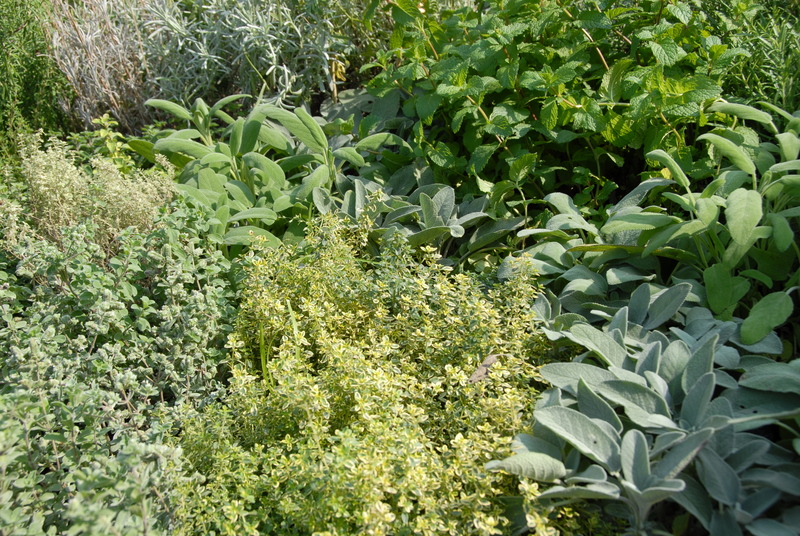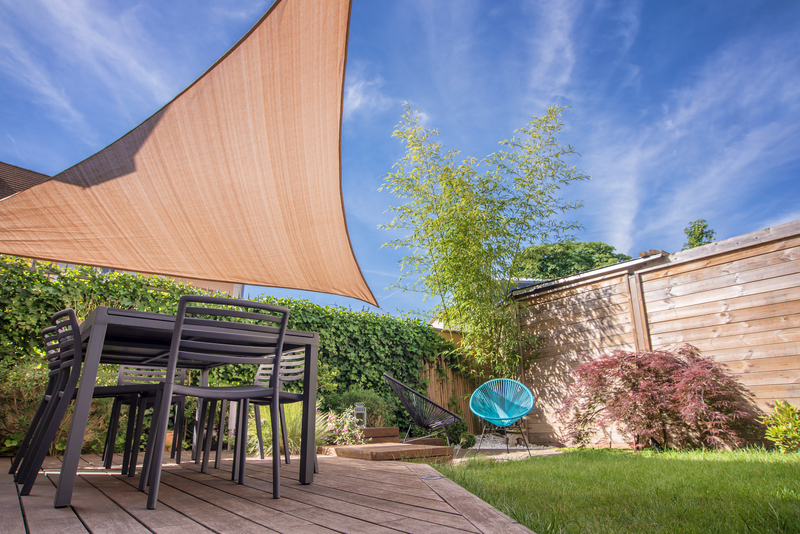Topiary Wonders: Exquisite Hedge Trimming Shapes and Techniques
Posted on 01/07/2025
Topiary Wonders: Exquisite Hedge Trimming Shapes and Techniques
Topiary, the ancient art of transforming living greenery into stunning sculptures, continues to amaze garden enthusiasts and professional landscapers alike. This horticultural marvel--where hedge trimming meets creativity--has graced majestic estates, public parks, and elegant gardens for centuries. Today, topiary art offers a wonderful way to add both structure and whimsy to any landscape, from classic clipped boxwood spheres to wild animal figures.
In this in-depth article, we'll unlock the secrets behind topiary wonders, uncovering both classic and contemporary hedge trimming shapes and offering tried-and-tested topiary techniques to help you master this living art form in your own outdoor space.
What is Topiary? The Living Sculptures of the Garden World
Topiary refers to the precise art of trimming and training perennial plants--typically evergreens--into clearly defined shapes, forms, and patterns. While many associate topiary with geometric shapes or animal figures, this artistic horticulture extends far beyond, embracing intricate designs, spirals, and abstract masterpieces.
- Etymology: The term topiary comes from the Latin topiarius, or landscape gardener.
- Historical Roots: The practice can be traced back to Roman times, enhanced during the Renaissance, and reached lavish heights in European palace gardens.
- Modern Appeal: Today, both traditional and avant-garde topiary delights homeowners and visitors in parks, botanical gardens, and private yards globally.
Why Master Topiary?
Topiary is much more than mere gardening; it is an expression of personality and creativity in living, ever-changing green. Well-executed topiary shapes not only add architectural structure and visual interest to the landscape but also create focal points, define pathways, and introduce a sense of timeless elegance or playful whimsy.
Popular Topiary Shapes: From Classic Forms to Fantastical Figures
Before grabbing those hedge shears, it's exciting to explore the many traditional and modern topiary shapes you can create. Each form requires a different hedge trimming technique and degree of patience, but all lend unique charm to gardens.
Classic Geometric Topiary Forms
- Spheres: Round, ball-shaped topiaries offer timeless appeal, perfect for topiary standards in pots or lining walkways.
- Cones: Cone-shaped topiary adds structure, creates optical height, and is a favorite feature in formal parterre gardens.
- Cubes and Rectangular Shapes: Great for low hedges or as formal boundary markers.
- Spirals: A modern twist where a single stem is clipped into an elegant corkscrew or spiral, often seen in front yard entrances.
- Pyramids: Delivering a stately appearance, these forms work well with plants like yew or boxwood.
- Tiered Topiaries: Multi-level spheres or other shapes stacked vertically - a striking, architectural statement.
Naturalistic and Themed Topiary Shapes
- Animal Forms: From majestic peacocks to playful rabbits and dogs, animal topiary can captivate viewers of all ages.
- Human Figures: Challenging and rare, these require wire frames and expert skill, often depicting famous personalities or gardeners themselves.
- Abstract Topiary: Free-flowing curves and imaginative shapes allow for creative self-expression.
- Lettering and Numbers: Popular for garden events, memorials, or celebratory displays.
- Themed Motifs: Shapes with cultural, seasonal, or regional significance--such as fleur-de-lis or Christmas-themed designs.
Choosing the Right Topiary Shape
When selecting a topiary form, consider:
- Plant Species: Some plants hold sharper edges better than others.
- Location & Scale: Match size and style to your garden's character.
- Skill Level: Beginners should start with simple geometric forms.
- Maintenance: All topiaries require upkeep, but complexity increases with shape intricacy.

Topiary Techniques: Mastering the Art of Hedge Trimming
Perfect topiary requires a combination of horticultural knowledge, patience, and artistry. Let's explore the hedge trimming techniques every aspiring topiarist should learn.
1. Choosing the Right Plants for Topiary
- Boxwood (Buxus): Dense, small-leaved, slow-growing, and a classic topiary favorite.
- Yew (Taxus): Tolerates rigorous trimming, grows slowly and lives very long.
- Holly (Ilex): Glossy leaves and red berries add texture and seasonal interest.
- Privet (Ligustrum): Grows quickly and recovers from heavy cuts, good for large topiary.
- Myrtle, Juniper, and Lonicera nitida: Also suitable for specific forms or regional climates.
2. Essential Tools for Topiary Hedge Trimming
A successful topiary project starts with the right tools. Never compromise on blade sharpness or tool quality.
- Hand Shears: For precision cuts on small hedges and fine work.
- Topiary Shears: Specialized for detailing, especially tiny leaves or tight angles.
- Hedge Trimmers: Manual or powered, for fast shaping of large hedges.
- Secateurs: For snipping thicker stems and branches.
- Wire Frames/Forms: Particularly helpful for complex or themed shapes.
- Garden String, Bamboo Canes, Stakes: Used to guide or support specific forms during growth.
3. Training Young Plants for Topiary Artistry
Patience is key when growing topiary from scratch. Begin with strong, healthy young plants. Train a single stem for standards, or shape hedges as they fill out. For new topiary, prune lightly at first, gradually encouraging dense, bushy growth before final shaping.
4. Freehand Trimming vs Framed Topiary Techniques
- Freehand Trimming: Suitable for basic geometric shapes and skilled topiarists. Develop a steady hand and check symmetry from all sides.
- Wire Frames: Essential for complicated designs (animals, logos, human figures, etc.). Plants grow through and are clipped at the frame's edges, eventually hiding the support.
Pro Tip: When using wire frames, secure them firmly and prune outward until the foliage masks the wire for an all-green illusion.
5. The Golden Rules of Hedge Trimming
- Trim Regularly: Don't let growth get out of control; frequent light trimmings are best.
- Keep Blades Sharp: Clean, crisp cuts reduce plant stress and disease risk.
- Prune at the Right Time: Most evergreen topiary can be shaped in late spring and again in mid to late summer.
- Step Back Frequently: Check symmetry and proportion from all angles during your work.
- Don't Remove Excess Foliage: Stay within a season's growth--never cut into old wood unless rejuvenating an overgrown form.
- Hydrate and Feed: Well-pruned hedges need regular watering, mulching, and balanced feeding.
Classic and Modern Topiary Projects to Try
Ready to bring a topiary wonder into your landscape? Here are a few inspirational ideas, complete with techniques and best-use cases:
Topiary Standard (Lollipop Tree)
- Description: A single straight stem topped with a perfect sphere.
- Technique: Begin with a young plant. Select the strongest stem, remove side shoots, and stake upright. Let it grow, then shape the canopy into a ball, trimming often to maintain density.
- Best For: Flanking entrances, adding height in pots, or lining walkways.
Spiral Topiary
- Description: A dramatic spiral winding upward around a central stem.
- Technique: Use string to guide your spiral path. Trim away foliage between lines, then gradually deepen the spiral with regular trims each season.
- Best For: Contemporary gardens, modern homes, patios.
Animal and Fantasy Topiary
- Description: From birds and mammals to mythical creatures, the possibilities are endless.
- Technique: Use a sturdy wire frame to define your animal or figure. Plant a fast-growing species inside, carefully weaving and trimming the foliage until the shape is complete.
- Best For: Children's play spaces, public parks, whimsical gardens.
Parterre Hedges
- Description: Low dwarf hedges in geometric or ornate patterns, often filled with colorful bedding plants inside.
- Technique: Set out canes and string to mark the pattern, plant dense slow-growing evergreen hedges, and clip regularly for razor-sharp edges.
- Best For: Formal gardens, entry courtyards, historical landscapes.
Cloud Pruning (Niwaki)
- Description: Japanese-inspired technique of shaping shrubs into rounded or irregular cloud-like forms.
- Technique: Prune to reveal elegant branching, then shape foliage into rounded "clouds"--works well with pines, yews, or privet.
- Best For: Zen gardens, modern landscapes, Asian-inspired designs.
Advanced Topiary Care and Maintenance
Creating exquisite hedge trimming masterpieces doesn't end with the initial shaping--it requires ongoing care and attention.
Watering and Feeding
- Newly Planted Topiary: Keep soil moist but not waterlogged for the first year. Mulch base to retain moisture and suppress weeds.
- Established Topiary: Water during dry spells, feed in early spring with slow-release fertilizer to support healthy, dense growth.
Pest and Disease Management
Common issues include boxwood blight, scale insects, and leaf miners. Practice good hygiene by removing fallen debris, inspecting regularly, and using appropriate organic or chemical treatments as needed.
Winter Protection
- Frost and Wind: In cold regions, shield tender topiary from harsh winds and extreme frost using frost fleece or windbreaks.
- Container Topiary: Move pots to sheltered spots or wrap containers in bubble wrap to insulate roots.
Rejuvenation Pruning for Overgrown Topiary
If a topiary hedge becomes overgrown or loses its shape, hard pruning in late winter or early spring can stimulate new growth. However, only established evergreens are good candidates for this process. Always expect several seasons for recovery and reshaping.
Inspirational Topiary Gardens and Notable Green Sculptures
For motivation and awe, visit these world-renowned topiary destinations:
- Levens Hall (UK): Home to the world's oldest topiary garden, featuring incredible centuries-old shapes.
- Chateau de Villandry (France): Stunning parterre and topiary artistry in a grand Renaissance setting.
- Longwood Gardens (USA): Classic geometric topiary shapes amid vibrant seasonal planting.
- Topiary Park (Columbus, Ohio): Recreates Seurat's "A Sunday Afternoon" painting entirely in hedge and shrub form!

Frequently Asked Questions About Topiary Hedge Trimming
How often should I trim my topiary?
Most classic topiary species benefit from trimming 2-3 times per growing season. Regular, light cuts are preferable to infrequent heavy pruning, as they maintain shape and encourage bushiness.
Can I make topiary from any plant?
Not all shrubs are suitable. The best topiary species have small, dense foliage and tolerate regular, close clipping. Boxwood, yew, privet, and myrtle are classics.
Is topiary hard to maintain?
Simple geometric topiaries (like spheres or cones) are reasonable for beginners and just need regular trims, feeding, and watering. Complex shapes require more skill, patience, and often the help of sturdy wire forms.
Where can I find topiary forms or frames?
Many garden centers, nurseries, and online retailers offer topiary forms in a variety of shapes and sizes, including bespoke options for ambitious projects.
Conclusion: Transform Your Garden into a Topiary Wonderland
From simple ball-shaped boxwoods to elaborate living menageries, topiary merges horticultural skill with artistic vision, offering endless possibilities for personal expression. By mastering fundamental hedge trimming techniques and choosing the right plant types and topiary shapes, anyone can create a stunning green feature that stands the test of time.
So, sharpen your shears, dream up your favorite form, and let nature's canvas become your masterpiece. Enter the world of topiary wonders--where exquisite hedge trimming shapes and techniques bring imagination to life!

